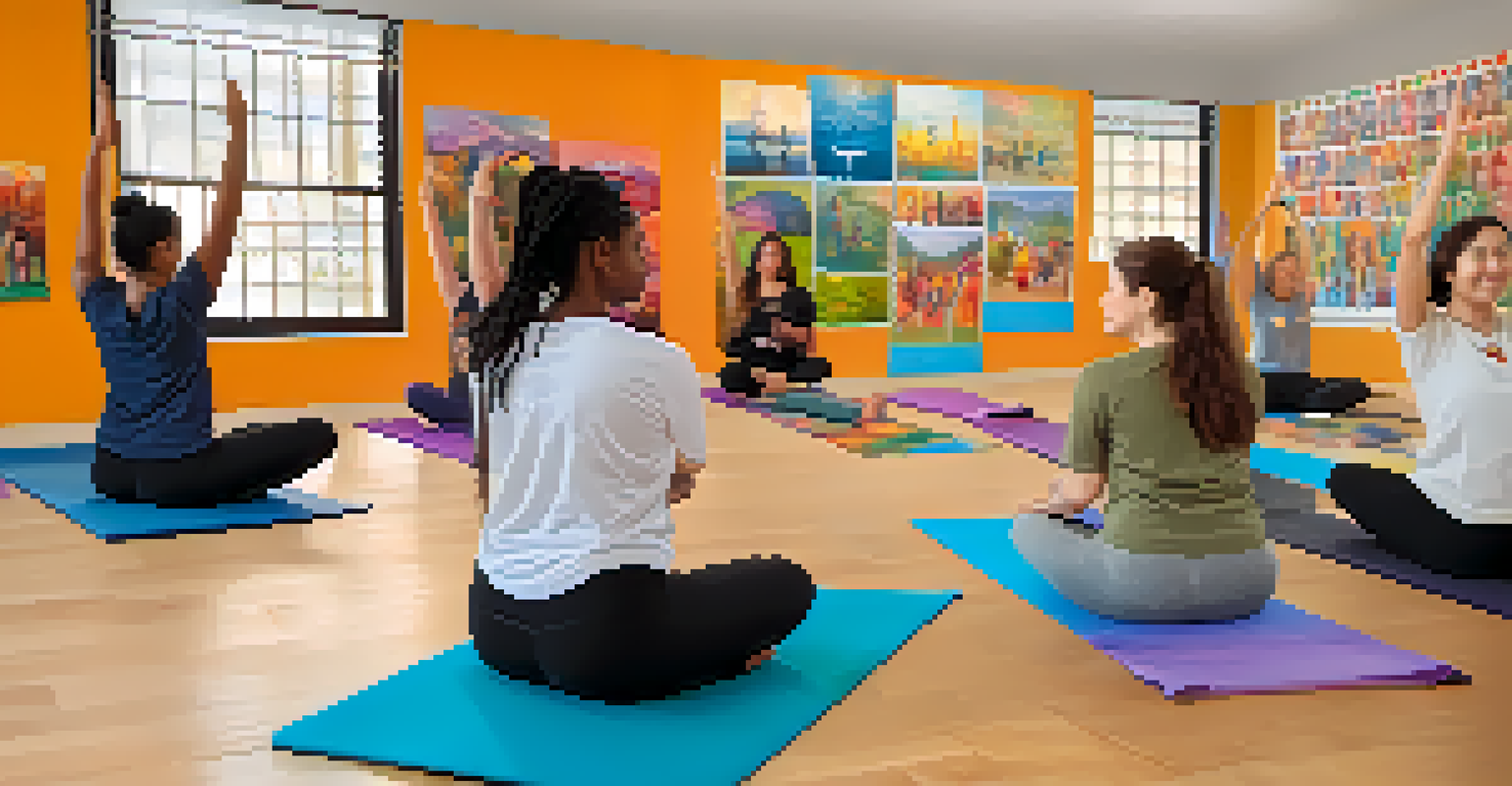Yoga as a Tool for Reducing Stress in School Environments

Understanding Stress in School Settings
Stress is a common issue faced by students in school environments, impacting their mental health and academic performance. With tight schedules, exams, and social pressures, students often feel overwhelmed. This stress can lead to anxiety and a decrease in overall well-being, making it crucial to find effective coping strategies.
Yoga is not about touching your toes, it is what you learn on the way down.
Recognizing the symptoms of stress is the first step toward addressing it. Symptoms can range from physical signs like headaches and fatigue to emotional responses such as irritability or sadness. By understanding these signs, educators and parents can provide timely support to students who may be struggling.
Incorporating stress management techniques into school routines can help create a healthier environment. One effective approach gaining popularity is yoga, known for its holistic benefits that cater to both the body and mind.
The Benefits of Yoga for Students
Yoga offers a range of benefits that can help students manage stress effectively. It promotes relaxation, enhances concentration, and improves emotional resilience. By practicing yoga, students learn to connect their minds and bodies, fostering a sense of calm amidst the chaos of school life.

Additionally, yoga encourages mindfulness, which is the practice of being present in the moment. This can help students focus on their current tasks rather than worrying about upcoming deadlines or exams. Mindfulness can also reduce anxiety, making it easier for students to tackle challenges head-on.
Stress Management in Schools
Implementing effective stress management techniques, like yoga, can significantly improve students' mental health and academic performance.
Furthermore, regular yoga practice can lead to improved physical health. It increases flexibility, strength, and balance, which can boost students' overall confidence and energy levels. When students feel physically good, it's easier for them to manage stress.
Implementing Yoga Programs in Schools
To make yoga accessible for students, schools can implement structured yoga programs. This can include classes during physical education, after-school activities, or even short sessions during breaks. By integrating yoga into the school day, students can benefit from its stress-relieving properties regularly.
Inhale the future, exhale the past.
Collaboration with certified yoga instructors can ensure that the programs are safe and effective. These professionals can tailor sessions to suit the age group and experience level of the students, making the practice approachable for everyone. This inclusivity is essential to fostering a positive attitude towards yoga.
Moreover, schools can encourage teachers to join in on the yoga sessions. When educators participate, it not only models healthy behavior but also strengthens the school community. A united front in practicing yoga can enhance its impact on reducing stress.
Creating a Calm Space for Yoga
A designated yoga space within the school can significantly enhance the experience. This space should be quiet, comfortable, and free from distractions, allowing students to immerse themselves in their practice. A calm environment can set the tone for relaxation and mindfulness.
Decorating the space with soothing colors and natural elements, like plants or soft lighting, can further create a peaceful atmosphere. This sensory experience can help students feel more at ease and open to the practice of yoga. Even small touches like mats and cushions can make a big difference.
Benefits of Yoga for Students
Yoga promotes relaxation, enhances focus, and builds emotional resilience, helping students navigate the pressures of school life.
Encouraging students to personalize their yoga experience can also enhance their connection to the practice. Allowing them to choose their yoga mats or bringing items that make them feel comfortable can foster a sense of ownership and importance in the activity.
Overcoming Barriers to Yoga Participation
While yoga is beneficial, some students may feel hesitant to participate due to misconceptions or lack of exposure. It's essential to address these barriers head-on by providing information about the practice's benefits. Educating students can help dispel myths and encourage a more open mindset.
Additionally, some students may feel self-conscious about their abilities. Creating a non-competitive environment can help alleviate these concerns, emphasizing that yoga is about personal growth rather than comparison. It’s crucial that students feel safe and supported in their practice.
Offering introductory workshops can also help demystify yoga for students. These sessions can provide a welcoming introduction to the practice, allowing students to explore yoga without pressure. The goal is to foster a sense of curiosity and willingness to try something new.
Measuring the Impact of Yoga on Stress Levels
To understand the effectiveness of yoga in reducing stress, schools should consider implementing feedback systems. Surveys can be conducted before and after yoga programs to gauge changes in students' stress levels and overall well-being. This data can provide valuable insights into the program's success.
Observational methods can also be employed, allowing teachers to note changes in student behavior and engagement. As students become more relaxed and focused, their classroom participation may improve, leading to better academic outcomes. These observations can help illustrate the benefits of yoga beyond just stress reduction.
Creating Supportive Yoga Programs
Establishing accessible yoga programs and a calming environment in schools can encourage student participation and foster a culture of mindfulness.
Finally, individual testimonials from students can highlight personal experiences and the positive impact of yoga on their lives. Sharing these stories can inspire others to join in, creating a ripple effect of interest in mindfulness and wellness practices within the school community.
Future of Yoga in Schools
As the benefits of yoga continue to be recognized, its presence in schools will likely grow. With increasing awareness of mental health, educational institutions are prioritizing well-being alongside academic success. Yoga's role in this shift can be pivotal, offering students tools to manage stress effectively.
Future initiatives might include integrating yoga with other wellness programs, such as meditation or nutrition workshops. This holistic approach can address multiple aspects of student health, creating a more robust framework for support. The potential for a comprehensive wellness curriculum is exciting for the future of education.

Ultimately, fostering a culture of mindfulness through yoga can empower students to take charge of their mental health. By equipping them with practical tools, schools can help create a generation of resilient learners ready to face challenges with confidence and calm.